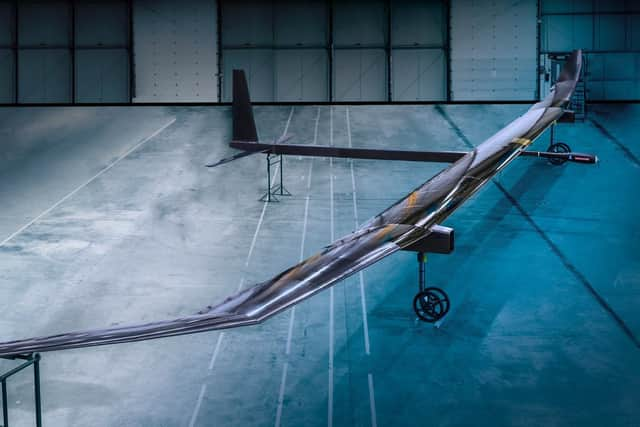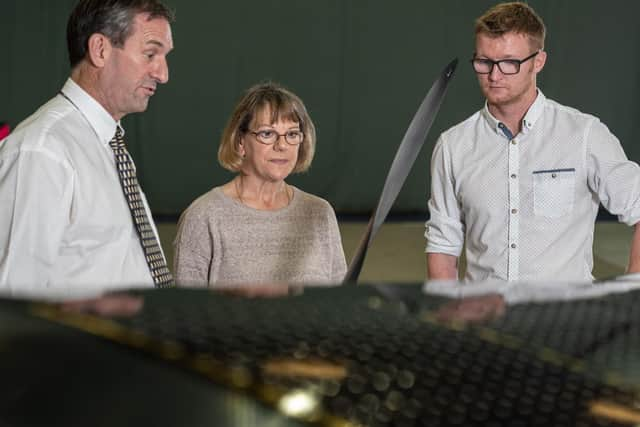The aircraft which can fly for a year without landing
and live on Freeview channel 276
Despite its low speed and gawky looks, the Phasa-35 being built by Prismatic of Bristol and BAE Systems together, has the ability to be a game changer when it comes to international disaster response operations, long term border surveillance and fishery protection.
It is a solar powered, propeller driven, pilotless aircraft which flies at high altitude for months on end with its 35m wingspan, acting as an eye in the sky and a much cheaper and more manoeuvrable asset than a satellite.
Advertisement
Hide AdAdvertisement
Hide AdWith high definition cameras and the ability to carry other digital equipment, it can even act as an overhead mobile phone link, providing 5G cover over remote areas or in a disaster relief emergency such as famine, bush fires or floods.


It stays in position 60,000 ft up, higher than the clouds and jet stream, thus avoiding high winds and bad weather and enjoying the full glare of the sun to power its batteries.
Since the initial collaboration between the two companies was announced in May 2018, engineers have been developing two of the solar-powered unmanned prototypes, with various sensor payloads and operational concepts.
They are now undergoing integration testing at BAE Systems’ Warton facility in Lancashire in preparation for flight trials planned for early next year.
Advertisement
Hide AdAdvertisement
Hide AdDavid Tyler, head of project for Prismatic at Warton said: “It sits above the jet stream and has a low forward speed. In fact, Usain Bolt can run faster than this aircraft flies, but up there it can circumnavigate the world in around eight days.


Drew Steel, BAE Systems’ operational requirements executive, said: “It can stay airborne for over a year. It has real persistence, so for something where you need to have monitoring every day, like monitoring an oil pipeline for leaks or observing the rainforest for fires for example, it will be perfect.
“It can only carry a 15kg payload but as you see with mobile phones everything technology-wise is getting smaller. It won’t take the place of something else such as a satellite, but it will be part of a layered surveillance system.”
The Phasa-35 (standing for Persistent High Altitude Solar Aircraft) is made from ultra-thin carbon fibre composite material and weighs just 150kg, including its 15kg payload.